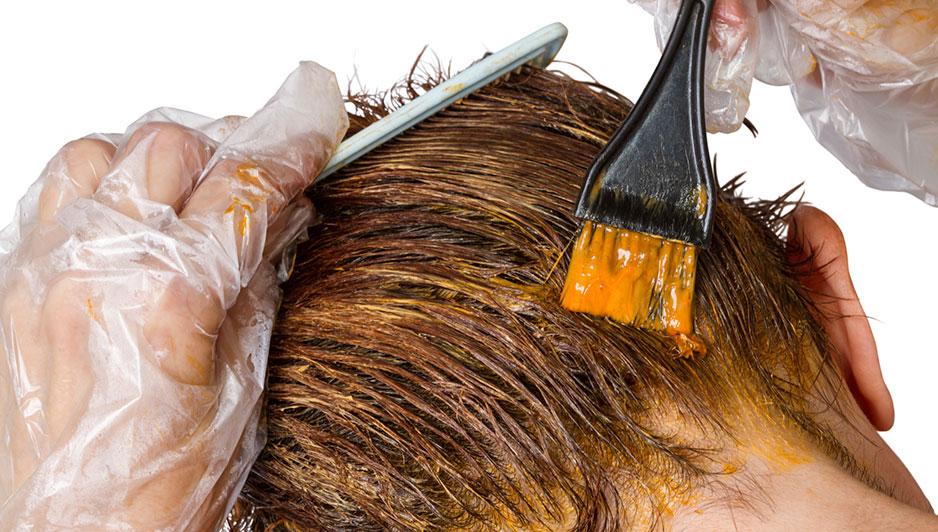Dr. Zoe Diana Draelos, MD | June 09, 2021
How to Care for Your Hair When Coloring

Image by Madison Reed
Here at Madison Reed, it is always our goal to give you the best, most accurate information on hair color + care, which is why we are working with a research and clinical board-certified dermatologist, Dr. Zoe Diana Draelos, MD. Recently, we asked Dr. Draelos how to care for colored hair from a scientific standpoint. Here is her esteemed answer...
The invention of hair color has made a profoundly positive impact on many peoples' lives. The ability to color your hair any shade you want or to simply cover gray hair is wonderful! Hair dye can be used safely by all when used as directed...but when you use permanent color on your hair, it’s important to take special care for your color-treated hair. Hair breakage can occur with color treated hair, especially if you already have damaged hair.
How Does Hair Color Work?
The most popular type of hair color is oxidative hair dye in which two components, peroxide and a colorant, enter the hair shaft and undergo a chemical reaction to create hair color that is resistant to removal by shampooing. Unfortunately, this reaction can compromise the protein structure of the hair shaft—the part of the hair shaft that strengthens hair. During the process of depositing oxidative hair color into the hair shaft, there will inevitably be permanent alterations to the hair structure, no matter what your natural color may be, no matter the color you choose, no matter the brand of hair color you select, and no matter whether you are doing it at home or with a colorist in a salon.
Choosing The Right Hair Color Shade Can Help Prevent Breakage
To minimize hair breakage as a result of coloring your hair, always color your hair within 3 levels of your natural color. Coloring your hair 3 or more shades lighter is typically done in a hair salon and usually requires using bleach, but it can be accomplished in some cases using permanent hair color. Hair breakage occurs when the hair is weakened and simply breaks off. The hair is not actually falling out by the root. Staying within 3 shades of your natural hair color (especially when going lighter), will reduce the degree to which thehair dye alters the structure of the hair shaft.
Why Is Gray Hair Hard To Color?
Unfortunately, gray hair is much harder to dye than pigmented (non-gray) hair. The natural melanin pigment in the hair shaft is part of the permanent hair dye chemical reaction. Gray hair has less melanin, which means it will not reach as deep of a shade when coloring it. This means the dye chemicals must be stronger and/or stay on the hair longer to create the desired new color. For this reason, gray hair will sustain more dye damage than pigmented hair. It's important to not leave hair color on for longer than the manufacturer recommends to minimize unnecessary damage.
Take Extra Care with Longer Hair to Avoid Breakage
Longer hair that has been colored will also be more prone to hair breakage than shorter dyed hair. Why? Because the longer hair has been on the head for more time and has sustained cumulative damage. Hair that is longer and has not been cut has been exposed to more combing, brushing, tangling, shampooing, pollution, and sun trauma. The hair is healthiest just as it grows from the scalp. Everything that is done to style and manipulate the hair as it comes out of the scalp causes damage. While it’s completely safe to dye long hair, recognize that the dye procedure will result in more fragile brittle hair and increased breakage. To avoid the damage resulting from cumulative hair color applications, I recommend to my patients to just touch up their roots each time they color and not repeatedly color the mid-lengths and ends of the hair.
The cumulative effects of heat styling can also contribute to damage of longer hair—if you flat iron or blow-dry every day, try changing your routine sometimes to give your hair a rest.
Conduct a Strand Test
You cannot repair the hair damage after repeated applications of hair color, bleach, and other chemical procedures such as perms or hair straightening. If bleaching at home, always conduct a strand test prior to bleaching, to ensure your hair is healthy enough to proceed. And wait 14 days between hair coloring and applying perms or chemical hair straighteners.
Other Tips to Minimize Hair Breakage
Another way to minimize damage is by applying a conditioner following a shampoo to decrease hair tangles. If you're prone to especially dry hair or you have damaged hair, you may even want to deep condition your hair weekly. This extra conditioning treatment will replenish your hair with added hydration. Protein treatments and leave-in conditioners are other post-shower options to add moisture and strength to help prevent breakage and split ends.
Choosing hairstyles that don’t involve lots of pins or clips or pulling also helps minimize breakage. If you want to put your hair into a ponytail, wait until your hair is dry and use a scrunchy or wide fabric band rather than a rubber band or clip or hair ties.Finally, comb and brush your hair as little as possible, especially with wet hair. Wet hair is much easier to break than dry hair.
Try to air-dry your hair when possible, but when needing to dry your hair quickly, use a water-whisking hair towel. Blow-drying and other heat tools can be damaging. If you use a blow dryer or any hot styling tool, be sure to apply a heat protectant product on your hair first, and add a deep conditioner to your routine, to reduce hair dryness. If your hair is particularly brittle, you try to avoid using hot tools.
Finally, avoid brushing your hair while it’s wet, but if you must, use a brush specifically designed for use on wet hair or a wide-tooth comb to minimize damage. You should be especially cautious if you have fine hair. The more you do to your hair from styling to coloring to brushing, the more breakage will occur. The potential weakening of your hair caused by hair dye is a trade off to get the hair color you want. Don't dye more frequently than necessary and use a quality hair color product. Following these tips will help minimize hair damage and breakage when coloring your hair. You'll notice fewer split ends and healthier-looking and feeling hair.













